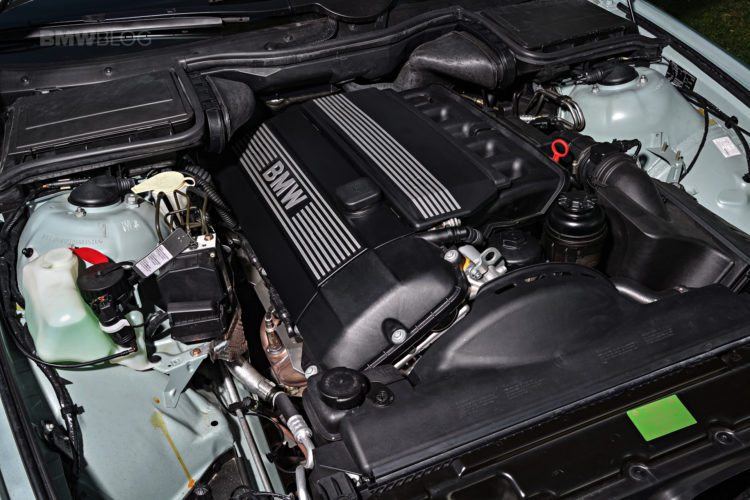The BMW M54 engine, produced between 2000 and 2006, is extensively considered one of many model’s most dependable and versatile straight-six engines. Its simplicity, sturdiness, and efficiency have earned it a legendary standing amongst lovers and mechanics alike. Present in fashions such because the E46 3 Collection, E39 5 Collection, E53 X5, and Z4, the M54 stays a cornerstone of BMW’s huge engine lineup.
Reliability: A Hallmark of the M54
The M54 engine is famend for its bulletproof reliability when correctly maintained. With routine care, many examples have reached astronomical mileage. Some house owners report engines surpassing 500,000 kilometers (310,000 miles) with out main points. A person on E46Fanatics.com even boasts an M54B30 with over 550,000 miles on the unique engine, a testomony to its sturdiness.
This longevity is supported by its simple design and manageable weak factors. The M54 avoids most of the pitfalls seen in different BMW engines, corresponding to:
- No turbos or high-pressure gasoline pumps just like the N54.
- No timing belt to switch, not like the M20.
- No valve changes required, not like the M30.
Its inventory cast crankshaft can deal with spectacular energy, additional showcasing its sturdy development. Nevertheless, common upkeep is essential to keep away from frequent pitfalls, corresponding to neglecting the cooling system, which may result in catastrophic overheating.
Recognized weak factors, such because the DISA valve, VANOS seals, and oil filter housing gasket (OFHG), are simply and affordably addressed with DIY options. This accessibility has cemented the M54’s popularity as a dependable and user-friendly engine.
M54 Engine Variants and Functions
The M54 was obtainable in three configurations:
- M54B22: 2.2L, 168 hp, 155 lb-ft of torque
- M54B25: 2.5L, 189 hp, 181 lb-ft of torque
- M54B30: 3.0L, 228 hp, 221 lb-ft of torque
M54B22
- Specs:
- Displacement: 2,171 cc (132.5 cu in)
- Energy: 125 kW (168 hp) at 6,100 rpm
- Torque: 210 N⋅m (155 lb⋅ft) at 3,500 rpm
- Bore: 80 mm (3.1 in)
- Stroke: 72 mm (2.8 in)
- Compression Ratio: 10.8:1
- Functions:
- 2000–2006 E46 320i, 320Ci
- 2000–2003 E39 520i
- 2000–2002 E36/7 Z3 2.2i
- 2003–2005 E85 Z4 2.2i
- 2003–2005 E60/E61 520i
M54B25
- Specs:
- Displacement: 2,494 cc (152.2 cu in)
- Energy: 141 kW (189 hp) at 6,000 rpm
- Torque: 245 N⋅m (181 lb⋅ft) at 3,500 rpm
- Bore: 84 mm (3.3 in)
- Stroke: 75 mm (3.0 in)
- Compression Ratio: 10.5:1
- Functions:
- 2000–2002 E36/7 Z3 2.5i
- 2000–2006 E46 325i, 325xi, 325Ci
- 2000–2004 E46/5 325ti
- 2000–2004 E39 525i
- 2003–2005 E60/E61 525i, 525xi
- 2003–2006 E83 X3 2.5i
- 2002–2005 E85 Z4 2.5i
M54B30
- Specs:
- Displacement: 2,979 cc (181.8 cu in)
- Energy: 170 kW (228 hp) at 5,900 rpm
- Torque: 300 N⋅m (221 lb⋅ft) at 3,500 rpm
- Bore: 84 mm (3.3 in)
- Stroke: 89.6 mm (3.5 in)
- Compression Ratio: 10.2:1
- ZHP Model (US & Canada):
- Energy: 175 kW (235 hp) at 5,900 rpm
- Torque: 301 N⋅m (222 lb⋅ft) at 3,500 rpm
- Redline: 6,800 rpm (6,500 rpm displayed in Canadian fashions)
- Awards:
- Included in Ward’s 10 Greatest Engines checklist (2001–2003)
- Functions:
- 2000–2006 E46 330i, 330xi, 330Ci
- 2000–2004 E39 530i
- 2000–2002 E36/7 Z3 3.0i
- 2003–2005 E60 530i
- 2002–2005 E85 Z4 3.0i
- 2003–2006 E83 X3 3.0i
- 2000–2006 E53 X5 3.0i
- 2002–2005 E65/E66 730i, 730Li
- 2000–2002 Wiesmann MF 30
Effectivity: Balancing Energy and Financial system
These M54 engines ship a satisfying steadiness of efficiency and effectivity, with gasoline consumption that continues to be respectable even by trendy requirements. Homeowners typically reward the M54 for its means to “come alive” above 3,500 RPM after which pulling strongly to its 7,000 RPM redline.
That stated, high-mileage M54 engines can endure from oil consumption points, not attributable to neglect however due to BMW’s use of a two-ring oil management design vulnerable to clogging. Later engine generations addressed this flaw by discontinuing the problematic design.
Tuning: Unlocking Potential
For lovers trying to extract extra efficiency, the M54 engine affords a strong basis for tuning. Its cast crankshaft, sturdy internals, and high-revving nature make it an excellent candidate for modifications. Frequent upgrades embody:
- Software program Tunes: ECU remapping can present modest beneficial properties in horsepower and torque whereas bettering throttle response.
- Chilly Air Intakes and Exhausts: Improved airflow and exhaust stream can improve the engine’s respiration and add a sportier sound.
- Pressured Induction: Whereas the M54 is of course aspirated, it might deal with average supercharging or turbocharging with correct preparation, together with upgraded internals and cooling.
Why the M54 Nonetheless Issues
The BMW M54 engine represents a golden period of naturally aspirated straight-sixes, delivering reliability, participating efficiency, and a mechanical purity that resonates with lovers. With correct care, it affords a driving expertise that stands the take a look at of time. Its ease of upkeep and widespread availability of DIY sources guarantee it stays a sensible and rewarding alternative for house owners.
Whether or not you’re sustaining a high-mileage every day driver, restoring a traditional BMW, or in search of a platform for a tuning venture, the M54 stands out as one in every of BMW’s most interesting engines. So long as you control the cooling system, observe common upkeep schedules, and deal with minor points promptly, the M54 will deal with you for years to come back.



